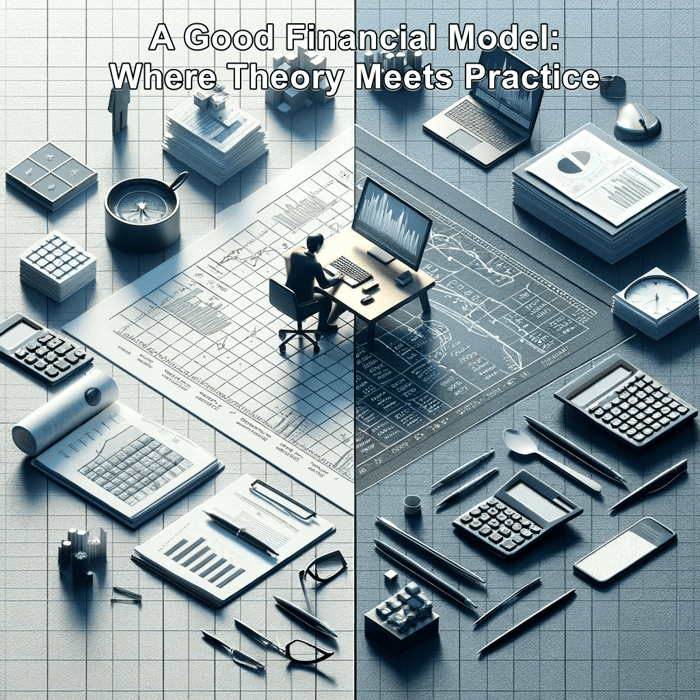Introduction
In the meticulous world of financial modeling, the quest for perfection is a common pursuit.
As financial professionals, we often find ourselves entangled in the technicalities - whether it's debating the merits of XLOOKUP vs. INDEX/MATCH, striving for flawless design, exploring dynamic arrays, or perfecting automated reporting systems.
However, when you step into the realm of operations, a stark realization hits: financial models, no matter how sophisticated, are just tools to facilitate real work.
tl;dr: I explore Financial Modeling in detail in my free email series the Financial Modeling Educator.
The Illusion of Perfection in Financial Modeling
Flawless Design vs. Functional Design
The allure of a flawless financial model is undeniable.
It's like a well-oiled machine, with every part functioning seamlessly. But, let's be honest: How often do we find ourselves lost in the intricacies of design rather than its function?
A model with a sleek interface and complex formulas might look impressive, but if it doesn't translate to actionable insights on the operational front, its value diminishes.
XLOOKUP, INDEX/MATCH: The Endless Debate
XLOOKUP and INDEX/MATCH are powerful tools in Excel, each with its unique strengths.
However, the debate over which is superior often overshadows a more critical question: Does the choice significantly impact the operational outcome?
In most cases, the answer is no. What matters more is how these tools are used to extract meaningful data that aids decision-making.
Dynamic Arrays and Automated Reporting: Blessing or Overkill?
The advent of dynamic arrays and automated reporting in Excel has been a game-changer.
Yet, there's a thin line between leveraging these features for efficiency and getting bogged down by their complexity.
Sometimes, simpler models that are easier to understand and manipulate can be more beneficial, especially when quick decisions are needed in operations.
A Reality Check: The Operational Perspective
Operations: Where Theory Meets Practice
In operations, theory translates into action.
This is where leads are converted into sales, products are manufactured, and deliveries are executed.
Operations demand pragmatism over perfection. An overly complex financial model might seem less appealing when you're under the pressure of meeting daily operational targets.
The Imperfectly Perfect Internal Financial Model
Reflecting on my own experience with my one-person business, I recognize that my internal financial model, while not perfect, serves its purpose effectively.
Sure, it could be optimized, and there might be tabs I no longer need.
But more importantly, it provides me with the essential information I need to run my business efficiently. It’s a reminder that sometimes, 'good enough' is not just okay; it's optimal.
The Key Takeaway: The Role of Financial Models in Operations
Financial Models: A Tool, Not the Goal
The primary function of a financial model is to aid in operational decision-making.
It's an abstract representation of our aspirations and a roadmap to achieving operational goals.
The question to ask is not how technically perfect the model is, but whether it gives you the necessary information - like key performance indicators (KPIs) and revenue targets - to execute effectively on the operational side.
Perfection vs. Practicality: Finding the Balance
In pursuit of the perfect financial model, we must not lose sight of its ultimate purpose: to serve as a guide in the real world of operations.
It’s about finding that sweet spot where the model is robust enough to provide accurate and relevant insights but not so complex that it becomes a hindrance.
Conclusion: Embracing 'Good Enough'
In conclusion, while striving for technical excellence in financial modeling is commendable, it's crucial to remember that in the dynamic world of operations, practicality often trumps perfection.
A model that is ‘good enough’ to provide the necessary insights for effective decision-making is indeed perfect in its own right.
At the end of the day, it's not about how sophisticated your model is, but how well it translates into real-world results.
📧If you liked this post, consider joining 30,000 other Modelers and sign-up for my free email series the Financial Modeling Educator.

